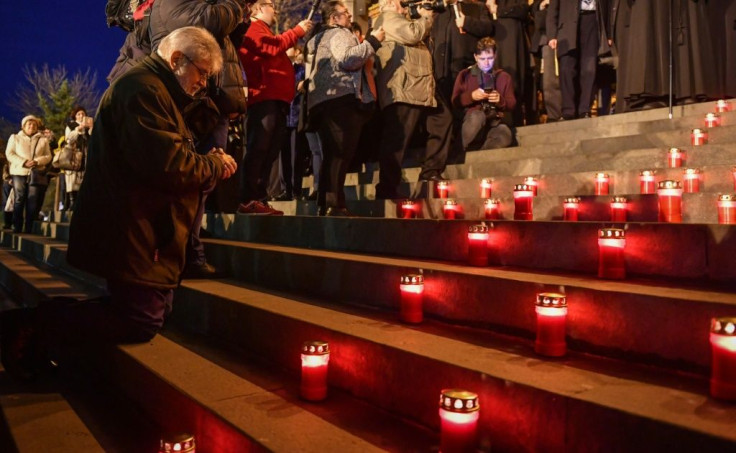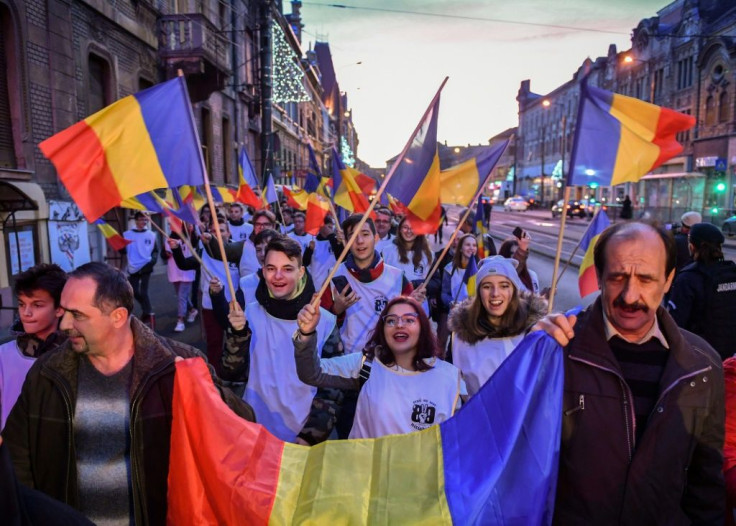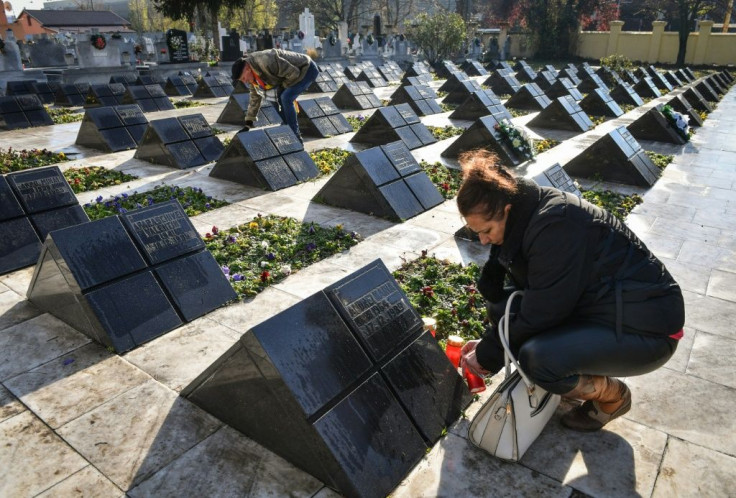'Freedom March' Marks 30 Years Since Romania's Revolution

Romania kicked off a series of commemorations to mark 30 years since the overthrow of the tyrannical regime of Nicolae Ceausescu, staging a "freedom march" in the town of Timisoara, cradle of the 1989 revolution.
Waving Romanian flags in the torchlit procession, several hundred people marched to the red-brick temple whose Reformed Church pastor Laszlo Tokes was expelled for criticising the Ceaucescu dictatorship in his sermons.
A protest against his expulsion was the spark for the revolution that brought down Europe's last communist regime, as the Iron Curtain between the continent's east and west had begun to disintegrate in the spring of 1989.

"I couldn't imagine that people would respond to my call... that they would come to my church to express their solidarity," Tokes, now 67, told AFP. "This solidarity morphed into a protest movement against the communist regime."
A plaque beside the sanctuary's door reads in Romanian, Hungarian, German and Serbian -- the languages of Timisoara's different communities: "The revolution that ended the dictatorship began here."

The slogans of 30 years ago such as "Today in Timisoara, tomorrow across the country" could be heard again on Sunday.
One of the marchers, 41-year-old Codruta Cesnea, said: "We want the sacrifice of the youths never to be forgotten. I told my son that he must respect the memory of the revolution."

Two days after the start of gatherings in support of the pastor, Ceausescu gave the order to fire on protesters. Around 60 were killed, and more than 2,000 were wounded on December 17, 1989, in Timisoara.
History professor Adrian Kali, 51, said the wave of change exceeded his expectations: "Today anyone can travel abroad, buy a car or a house."
He regretted however that young people seem to know little of the history.
Gerhard Ullmann, an engineer, disagreed that things are much better. "Look at the wages, people's standard of living." Yet he said he travelled to Timisoara specially from Germany -- where he emigrated in 1994 -- to take part in the commemorations.
The anti-regime demonstrations reached the capital Bucharest on December 21, 1989. The next day Ceausescu and his wife fled the city in a helicopter before being arrested.
They were condemned and summarily executed on Christmas Day 1989.
In all, 1.104 people were killed in fighting for Romania's revolution and 3,552 were injured.
© Copyright AFP 2024. All rights reserved.




















